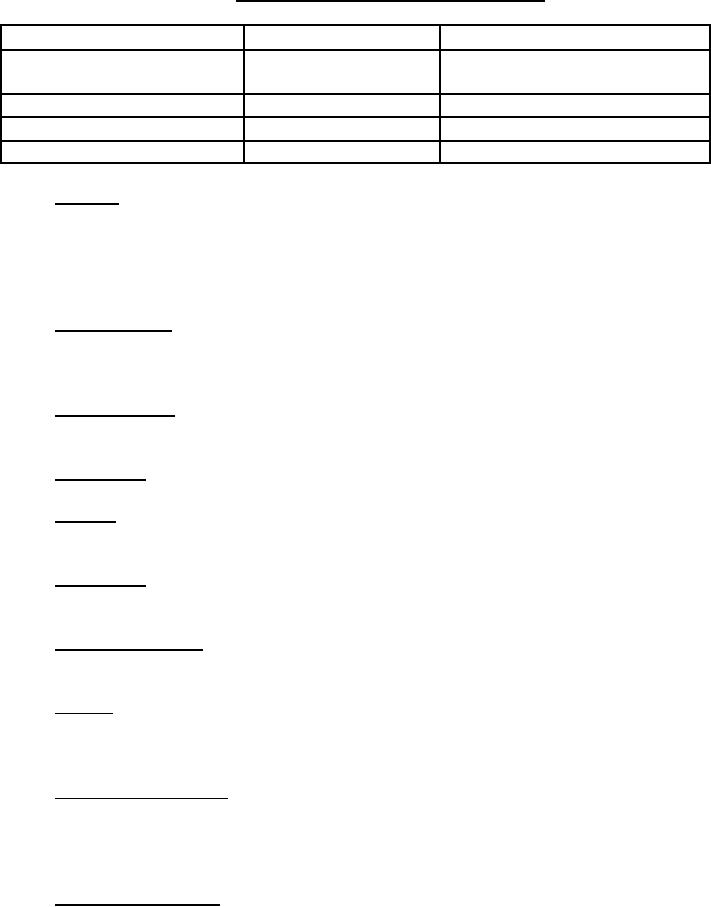
MIL-PRF-25369D
TABLE I. Properties of non-medicinal carbon dioxide.
PROPERTY
REQUIREMENT
CO2 CAPACITY
TYPE I: ≥ 25 and ≤ 28 grams
Purity, minimum percent by
99.5%
volume
TYPE II: ≥ 28 and ≤ 31 grams
Acidity
0-6.8
TYPE III: ≥ 34 and ≤ 37 grams
Moisture content, maximum
0.092 mg/l
Odor
No objectionable odor
3.5
Interface. Figures 1 and 2 represent general concepts for three types of carbon dioxide
cylinders. They should be used for dimensional purposes such as length, width, and thickness, but
not construed as the only possible design approach. Type I cylinders shall conform to the general
dimensions mentioned in figure 1. Type II and Type III cylinders shall conform to the general
dimensions mentioned in figure 2.
3.5.1 Cylinder threads. The threads shall conform to figure 1, for Type I and figure 2 for Type
II and Type III cylinders. The acquisition documents shall identify the required threading and
verification procedures thereof (see 6.2 and 6.6).
3.5.2 Puncturable area. Each cylinder shall be provided with a puncturable area as shown in
figures 1 and 2.
3.6
Performance.
3.6.1 Leakage. Filled cylinders shall show no evidence of leakage at any point when subjected
to the leakage and cyclic leakage tests specified in 4.7.3 and 4.7.7.
3.6.2 Deformation. Cylinders shall be examined to ensure that there is no deformation of the
cylinder or of the puncturable area after being tested as specified in 4.7.5.
3.6.3 Hydrostatic pressure. Cylinders shall not burst when subjected to an internal hydrostatic
pressure of 8,000 pounds per square inch (psi), when tested as specified in 4.7.8.
3.6.4 Rupture. When the filled cylinder is subjected to the rupture test specified in 4.7.9, there
shall be no splintering or fragmentation upon rupture of the cylinder. Complete separation of the
puncturable area or of any portion of the cylinder shall be considered fragmentation.
3.6.5 Maximum filling density. The maximum filling density of the cylinder shall be 72 percent
for Type I and 76 percent for Types II and III. The filling density is the ratio of weight of carbon
dioxide in a container to the weight of water that the container will hold (see 4.7.10 for equation)
expressed as a percent
3.6.6 Minimum gross weight. Indicated minimum gross weight shall be the empty weight of the
cylinder (rounded off to the next lower 1/2 gram), plus the weight of the minimum gas charge.
3
For Parts Inquires call Parts Hangar, Inc (727) 493-0744
© Copyright 2015 Integrated Publishing, Inc.
A Service Disabled Veteran Owned Small Business